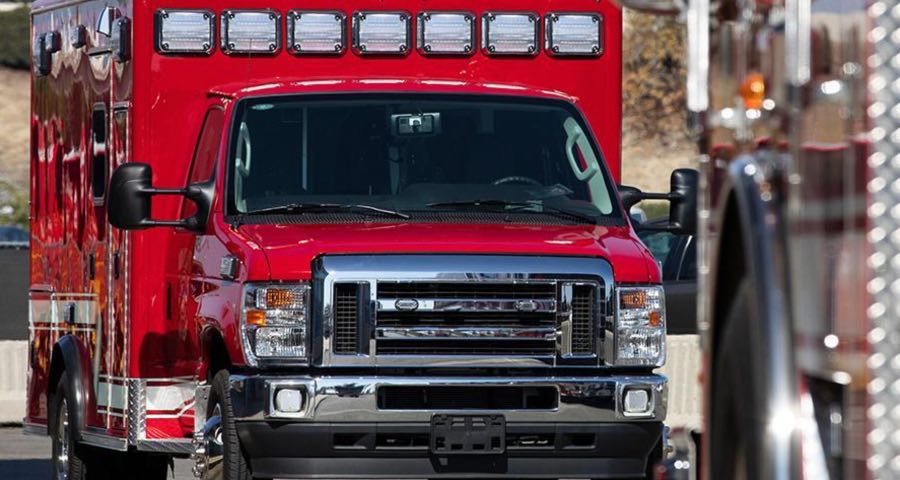
The volunteer EMS community is a vital part of our nation’s public safety efforts, especially in rural areas. They need strong communications capabilities and coverage that they can rely on. That’s why the FirstNet Authority worked closely with EMS leaders during the early days of network planning to ensure that any EMS provider—career or volunteer—can use FirstNet for emergency communications.
Today, FirstNet provides important communication benefits to volunteer first responders, including EMS officials, who operate on limited budgets with less resources.
Over 1 million people work in EMS, and according to the National Rural Health Association, about 53% of rural EMS agencies and 14% of urban agencies are staffed by volunteers only. These smaller agencies are often underfunded and carry disproportionate costs in providing service to their communities.
That’s why volunteer agencies don’t typically provide personnel with a cellphone or sign them up for broadband service. “Most volunteer fire and EMS workers provide their own cellular communications devices to assist in the completion of their duties,” said Chief Reid Vaughan of the Cuba Fire Department in Alabama.
All EMS providers must be able to communicate in an emergency. That’s why FirstNet has a program for individual first responders to sign up for FirstNet services called the subscriber-paid program. EMS volunteers can subscribe to FirstNet for their personal devices to get prioritized communications, increased capacity and coverage, and solutions designed for public safety operations.
Chief Vaughan explained, “By allowing subscriber-paid service accounts, the same exact services are available to volunteer members on their personal devices at a lower cost. Being able to offer plans of this nature was critical to the success of the nationwide network.”
Chief Vaughan is a member of the National Volunteer Fire Council, an organization representing the interests of volunteer fire, EMS, and rescue services. In this role, he serves on the FirstNet Authority’s Public Safety Advisory Committee. Chief Vaughan and other members of the committee provide advice and recommendations to assist the FirstNet Authority in overseeing the buildout, deployment, and operation of FirstNet.
The voice of volunteer EMS agencies is important to our work at the FirstNet Authority. Early on, the Public Safety Advisory Committee explored different approaches to make the network accessible to all responders. Thanks to those efforts and the input of EMS leaders nationwide, volunteer responders are now able to access the network through subscriber-paid and bring-your-own-device plans.
For smaller volunteer EMS agencies, FirstNet levels the playing field, giving access to the same quality of services and products that bigger agencies with more resources have. Plus, the network has many unique features designed for the public safety community.
FirstNet was created for public safety communications. The network gives first responders priority and preemption so they’re always the most important users on the network. That means when networks get congested from high traffic, public safety users on FirstNet don’t lose network resources and stay connected. The network was designed with input from the public safety community, including volunteers.
FirstNet’s apps and devices are tailored for public safety operations. The FirstNet App Catalog has over 200 apps that are tested and certified for public safety use. Over 300 devices, including smartphones and tablets, are approved for use on FirstNet’s specialized Band 14 spectrum. Volunteer EMS personnel can benefit from these unique apps and devices optimized for emergency communications.
One of FirstNet’s top priorities is expanding coverage for first responders in rural areas. Since 2018, FirstNet has added hundreds of new, purpose-built cell sites to bring more coverage and boosted capacity for America’s first responders, with a focus on rural areas where many EMS volunteers work. Today, AT&T reports that over 99% of Americans are covered by FirstNet.
FirstNet is built through a first-of-its-kind public-private partnership with AT&T. The FirstNet Authority ensures that AT&T delivers on the terms of its contract to create a network designed for public safety. This function is unique to FirstNet—no other carrier gives public safety the same level of assurances and government oversight.
First responders can sign up for the subscriber-paid program on FirstNet either through their agency or as individuals. Agencies can work with AT&T to get an affiliation code that personnel may use to demonstrate eligibility for FirstNet. Individual first responders can bring their credentials to an AT&T store to get verified as a first responder and be eligible for FirstNet.
AT&T also has a program that allows first responders on FirstNet and their families on AT&T to be on the same bill. And if the full agency signs up for FirstNet, the subscriber-paid account can easily switch over to an agency-paid account.